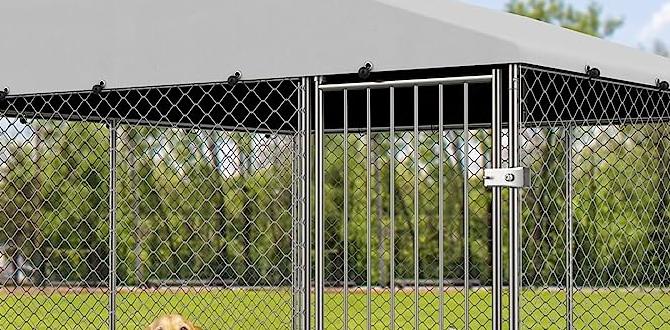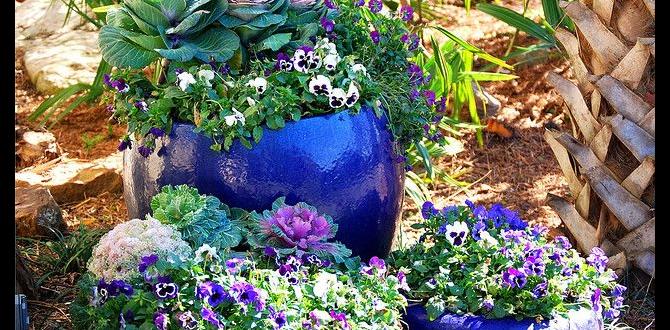Have you ever dreamed of picking fresh vegetables from your own garden? Gardening can be a fun hobby, and growing your own food is rewarding. Imagine biting into a juicy tomato or crunchy cucumber that you nurtured from a tiny seed. It’s exciting!
Many people find gardening to be a relaxing activity. But did you know that there are some great gardening tips for vegetables? These tips can help you grow a thriving garden even if you’re a beginner.
For instance, did you know that not all vegetables grow well in the same season? Some love the heat of summer, while others flourish in cooler weather. Learning about vegetable needs can save you time and effort.
In this article, we will share easy and practical gardening tips that can help anyone grow delicious vegetables at home. Whether you have a big garden or a small pot on a balcony, these tips will make you a successful gardener!
Essential Gardening Tips For Vegetables: Grow Bountiful Harvests

Gardening Tips for Vegetables
Growing your own vegetables can be fun and rewarding. Start by picking the right spot with good sunlight. Did you know that soil health is key to a thriving garden? Adding compost can make a big difference! Water regularly, but don’t drown your plants. Timing is important, too; some seeds need to be planted at specific times of the year. So, are you ready to dig in and watch your garden bloom?Choosing the Right Location
Importance of sunlight exposure for vegetable growth. Assessing soil quality and drainage.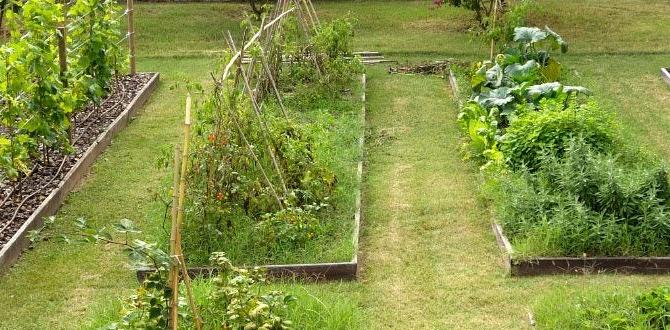
Finding the perfect spot for your veggies is like choosing the best seat in a movie theater. They love sunlight, so aim for a place that gets at least 6-8 hours of sunshine each day. Think of it as sunbathing for your plants! Next, check your soil. It should be rich and nice, not like concrete. Good drainage is key—muddy roots are not happy roots. Here’s a quick guide:
| Criteria | Ideal Condition |
|---|---|
| Sunlight | 6-8 hours/day |
| Soil Quality | Loamy and rich |
| Drainage | Well-draining |
Picking the right spot may seem hard, but it’s a recipe for veggie happiness!
Soil Preparation
Testing soil pH and nutrient levels. Amending soil with compost and organic matter.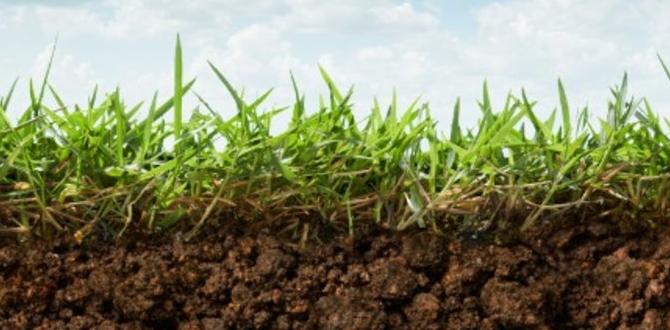
Start by checking your soil’s pH and nutrients. You can do this using a simple soil test kit. Most vegetables like a pH between 6 and 7. If your soil is too acidic or alkaline, it can affect plant growth. You can improve soil quality by adding compost and organic matter. Compost enhances soil health and provides nutrients. Make sure to mix it well with the soil. This will help your vegetables grow strong and healthy.
How can I test my soil for pH and nutrients?
To test your soil, you can use a simple kit from a garden store. Follow the instructions closely to get accurate results.
Steps to amend your soil:
- Choose good-quality compost.
- Spread a layer over your garden.
- Mix it into the existing soil.
Selecting Suitable Vegetables
Understanding climate suitability for different vegetables. Companion planting for improved yield.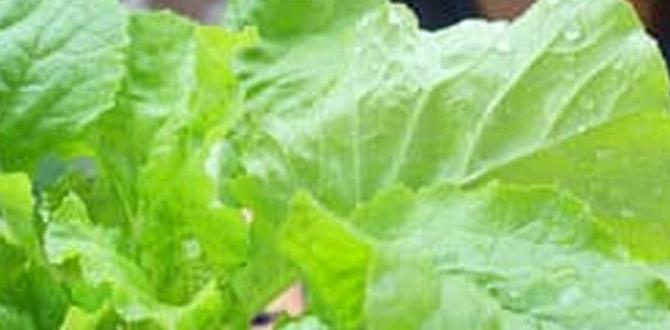
Choosing the right vegetables for your garden is like picking the best treats from a candy jar! Each vegetable has its own favorite weather. For example, tomatoes love the warm sun, while spinach enjoys a little chill. Plotting the right match can bring you lovely veggies. And don’t forget about buddy plants! For better growth, add companion plants like basil with tomatoes—better together like peanut butter and jelly.
| Vegetable | Best Climate | Companion Plant |
|---|---|---|
| Tomato | Warm | Basil |
| Spinach | Cool | Strawberries |
| Carrots | Cool | Onions |
In short, match your vegetables to their climate and plant buddies for the best harvest. Happy gardening!
Planting Techniques
Best practices for seed sowing vs. transplanting. Optimal planting depths and spacing for various vegetables.
When starting your vegetable garden, consider how you plant. Sowing seeds directly into the soil can be easy, like throwing confetti at a party. But transplanting seedlings is like giving them a fancy ride to the gala. Each method has its perks!
For standing out, planting depth matters. Most seeds like to snuggle deep, while some prefer to lounge closer to the surface. Check out our nifty table below for optimal depths and spacing. Remember, even vegetables need their personal space!
| Vegetable | Planting Depth (inches) | Spacing (inches) |
|---|---|---|
| Carrots | 0.5 | 2 |
| Tomatoes | 2 | 24 |
| Lettuce | 0.25 | 12 |
With these tips, your veggie garden will thrive! Just remember—plant wisely, and you’ll get delicious results. Happy gardening!
Irrigation and Watering Strategies
Importance of consistent watering for vegetable health. Techniques for efficient watering (drip irrigation, soaker hoses).Watering your veggies is like giving them a drink on a hot day. Consistent watering helps plants grow strong and tasty. If they don’t get enough water, they can wilt. Picture a sad tomato! Luckily, there are smart ways to give plants their drinks. Techniques like drip irrigation and soaker hoses can save time and water. They deliver moisture right where it’s needed, like a water gift for your garden!
| Watering Techniques | Benefits |
|---|---|
| Drip Irrigation | Delivers water directly to roots, saving water and time |
| Soaker Hoses | Gradually releases water into the soil, great for long beds |
Pest and Disease Management
Identifying common pests and diseases in vegetable gardens. Organic pest control methods and preventive measures.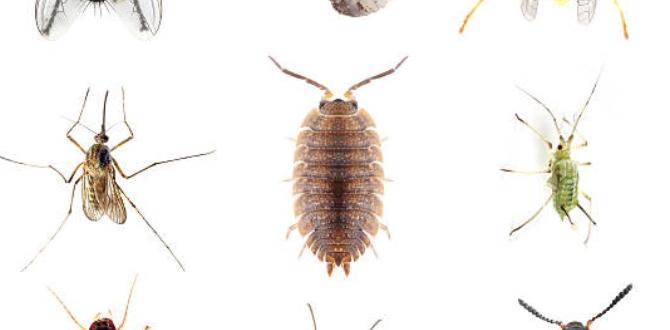
Pests and diseases can harm your vegetable garden. Common pests include aphids, beetles, and caterpillars. These pests munch on leaves and damage plants. Fungal diseases like powdery mildew can also appear, causing plants to look sick.
Use these organic control methods:
- Introduce helpful insects like ladybugs.
- Apply neem oil or insecticidal soap.
- Rotate crops each season to prevent diseases.
Healthy plants are more resistant. Water early and keep good airflow. Monitor your garden daily. It’s easier to stop a problem before it starts!
How can I spot pests in my vegetable garden?
Look for small bites on leaves or sticky spots on plants. Check under leaves for tiny insects or webs. Frequent checks help catch problems early!
Fertilization Practices
Types of fertilizers (organic vs. synthetic). When and how to fertilize for maximum growth.
Fertilizers help plants grow strong and healthy. There are two main types: organic and synthetic. Organic fertilizers come from natural sources like compost, while synthetic ones are made in factories. Each type has its benefits.
For best results, fertilize your vegetables in the spring and again in mid-summer. Apply it according to the instructions on the package. Here’s a quick guide:
- Organic: Slow-release, improves soil health.
- Synthetic: Fast-acting, precise nutrient levels.
Giving plants the right nutrients at the right time can boost their growth by up to 50%. So, choose the right fertilizer for a bountiful harvest!
When should you fertilize your vegetables?
Fertilize your vegetables in early spring and again in summer for strong growth. Remember to check the soil regularly, as healthy soil leads to healthy plants!
Harvesting Techniques
Signs of ripeness for various vegetables. Proper harvesting methods to avoid damaging plants.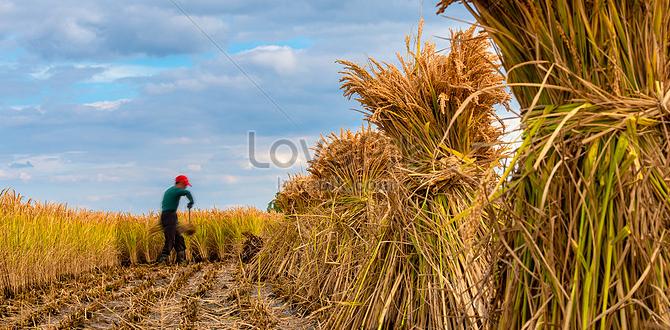
Knowing when to pick vegetables is key. Signs of ripeness can vary. For example, tomatoes should be bright red. Cucumbers feel firm and are still green. Carrots are ready when they’re about an inch thick.
Use proper methods to avoid harm. Always use a sharp knife or scissors to cut vegetables. Pulling can hurt the plant. This helps your garden stay healthy for the next harvest!
What are the signs of ripe vegetables?
Look for bright colors, firm texture, and size. Each veggie has its own sign, so check them often!
Signs of Ripeness
- Tomatoes: Bright red color
- Cucumbers: Firm and green
- Carrots: About an inch thick
Be gentle during harvesting. This keeps your plants safe and strong for next time. Happy gardening!
Seasonal Care and Maintenance
Seasonal tasks for vegetable gardens (weeding, mulching). Preparing your garden for the offseason.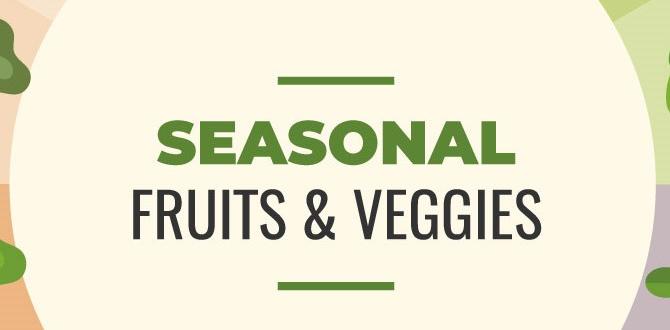
Gardening requires special care with the changing seasons. During spring and summer, focus on weeding regularly. This helps your vegetables grow strong. Mulching keeps the soil moist and cool. As autumn approaches, prepare your garden for winter. Clear out dead plants and cover the soil. This protects it from harsh weather. Here are some seasonal tasks:
- Remove weeds every week.
- Add mulch around plants.
- Clean up debris in fall.
- Cover the soil to prevent erosion.
What should I do in the offseason?
In the offseason, clean your garden and protect the soil. This will help prepare it for the next planting season. Use these steps to keep your garden healthy and ready!
Utilizing Vertical Gardening
Benefits of vertical gardening for spacesaving. Suitable vegetables for vertical gardening techniques.
Using vertical gardening helps save space while growing vegetables. This method lets plants climb up instead of spreading out. It makes small yards or balconies more useful. Plus, it can keep plants healthier by improving air flow. Popular vegetables for this technique include:
- Cucumbers
- Tomatoes
- Peas
- Beans
- Lettuce
So, if you’re limited on space, vertical gardening is a great choice!
What are the benefits of vertical gardening?
Vertical gardening saves space, improves air circulation, and makes harvesting easier.
Which vegetables are good for vertical gardens?
- Cucumbers
- Tomatoes
- Peas
- Beans
- Lettuce
Conclusion
In summary, gardening tips for vegetables help you grow healthy plants! Start by choosing the right seeds and preparing your soil. Water regularly and watch for pests. Remember to give your veggies enough sunlight. Now, get your hands dirty and start planting! For more fun ideas, read other gardening articles or ask a friend for advice. Happy gardening!FAQs
What Are The Best Types Of Soil For Growing Vegetables In Home Gardens?The best types of soil for growing vegetables are loamy soil and sandy soil. Loamy soil is soft and has a mix of sand, silt, and clay. This type holds water well and helps vegetables grow strong. Sandy soil drains quickly and warms up fast, which is good for some plants. You can also improve soil by adding compost, which helps vegetables grow even better!
How Can I Control Pests And Diseases Naturally Without Using Harmful Chemicals?You can control pests and diseases naturally by using simple things. Start by planting strong herbs like basil and mint. These plants can keep bugs away. You can also mix soap and water in a spray bottle to help fight pests. Regularly checking your plants and keeping them clean helps, too!
What Vegetables Are Best Suited For Beginner Gardeners And Require Minimal Care?For beginner gardeners, some easy vegetables to grow are carrots, radishes, and green beans. These plants need little care and grow quickly. You can just plant the seeds, water them, and watch them grow! They don’t get many pests and are fun to harvest. Happy gardening!
How Often Should I Water My Vegetable Garden, And What Signs Indicate A Plant Needs Water?You should water your vegetable garden about once a week. If it’s hot or dry, you might need to water more often. Plants need water if their leaves look wilted or droopy. Also, if the soil feels dry an inch down, it’s time to water. Always check your plants to see what they need!
What Companion Plants Can I Use To Improve Vegetable Growth And Deter Pests?You can use marigolds with your vegetables. They keep bad bugs away. Basil helps tomatoes grow better. Garlic can scare off pests, too. Planting carrots and onions together can help them both thrive.
{“@context”:”https://schema.org”,”@type”: “FAQPage”,”mainEntity”:[{“@type”: “Question”,”name”: “What Are The Best Types Of Soil For Growing Vegetables In Home Gardens? “,”acceptedAnswer”: {“@type”: “Answer”,”text”: “The best types of soil for growing vegetables are loamy soil and sandy soil. Loamy soil is soft and has a mix of sand, silt, and clay. This type holds water well and helps vegetables grow strong. Sandy soil drains quickly and warms up fast, which is good for some plants. You can also improve soil by adding compost, which helps vegetables grow even better!”}},{“@type”: “Question”,”name”: “How Can I Control Pests And Diseases Naturally Without Using Harmful Chemicals? “,”acceptedAnswer”: {“@type”: “Answer”,”text”: “You can control pests and diseases naturally by using simple things. Start by planting strong herbs like basil and mint. These plants can keep bugs away. You can also mix soap and water in a spray bottle to help fight pests. Regularly checking your plants and keeping them clean helps, too!”}},{“@type”: “Question”,”name”: “What Vegetables Are Best Suited For Beginner Gardeners And Require Minimal Care? “,”acceptedAnswer”: {“@type”: “Answer”,”text”: “For beginner gardeners, some easy vegetables to grow are carrots, radishes, and green beans. These plants need little care and grow quickly. You can just plant the seeds, water them, and watch them grow! They don’t get many pests and are fun to harvest. Happy gardening!”}},{“@type”: “Question”,”name”: “How Often Should I Water My Vegetable Garden, And What Signs Indicate A Plant Needs Water? “,”acceptedAnswer”: {“@type”: “Answer”,”text”: “You should water your vegetable garden about once a week. If it’s hot or dry, you might need to water more often. Plants need water if their leaves look wilted or droopy. Also, if the soil feels dry an inch down, it’s time to water. Always check your plants to see what they need!”}},{“@type”: “Question”,”name”: “What Companion Plants Can I Use To Improve Vegetable Growth And Deter Pests?”,”acceptedAnswer”: {“@type”: “Answer”,”text”: “You can use marigolds with your vegetables. They keep bad bugs away. Basil helps tomatoes grow better. Garlic can scare off pests, too. Planting carrots and onions together can help them both thrive.”}}]}


